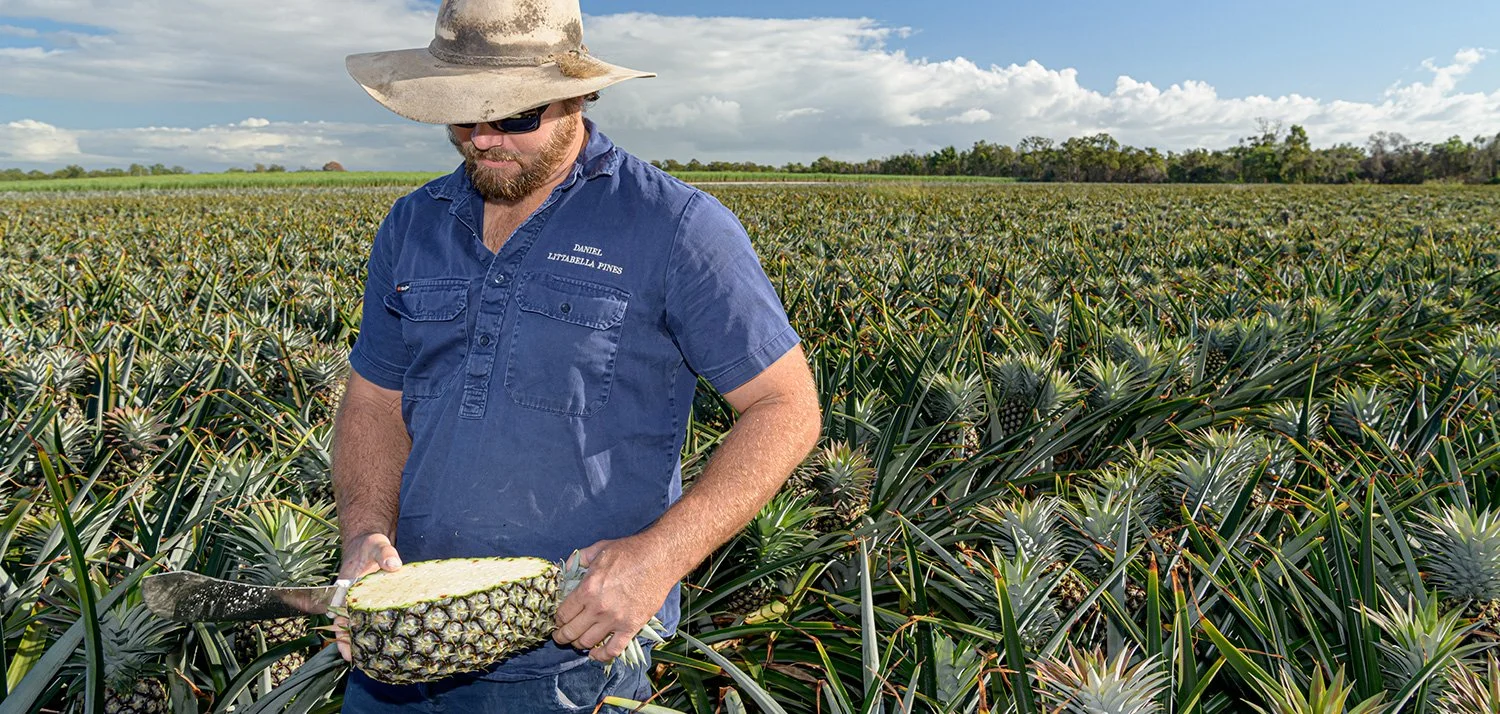Improved environmental outcomes and industry sustainability: Littabella Pines looks to the future
The Australian pineapple industry is taking a proactive approach to improving environmental outcomes and enterprise sustainability with a number of industry-led research and development trials currently underway across the state.
For Bundaberg grower, John Steemson the industry trials are as much about achieving better results for the farming enterprise and environment as they are about instigating conversion and practice change.
John began his farming career at the age of 15, leaving school to farm on his parent’s property.
Today John along with his wife Linda, and sons Daniel and Justin operate Littabella Pines, a farming enterprise covering 1200 hectares of land in the Bundaberg region growing pineapples, watermelons, sweet potatoes, pumpkins, and sugarcane.
John and Linda planted their first crop of pineapples in 2002 after experiencing very dry conditions which left them unable to irrigate.
“The only water we have on the property comes from our dams. We are not on any irrigation scheme and there are no underground water deposits,” John said.
“A good friend of ours suggested pineapples as it was a crop that didn’t need much, if any, irrigation.
“We planted our first crop in 2002, had our first fruit in 2004 and it has been a steady progression since then.”
Today the Steemsons grow pineapples across 250 hectares of land producing around 5000 tonnes annually.
When market conditions are attractive, John said they send around 600 tonne of pineapple to the fresh markets. The remainder of their crop is sent to Golden Circle for processing.
Dry conditions continue to cause issues for the pineapple industry with John explaining the past two years have been some of the driest on record.
“It’s been shocking the past two years,” John said.
“Out of an average annual rainfall of 1200 mm, in 2019 we only measured 280 mm, and again in 2020 we only received a little over 500 mm.
“The lack of rain has resulted in an enormous amount of small juice grade pineapples with around one third of production for the past two years undersized.”
Despite the ongoing drought conditions, John recently recorded 100 mm across his farm with more rainfall expected.
The range of crops grown on the Steemson’s property allows for production 12 months of the year. This steady production schedule has aided the Steemsons to maintain full time employment for their core group of 25 workers.
“Having that consistent production has been really useful for us in being able to maintain a stable workforce,” John said.
Recognising their position on the very doorstep of the Great Barrier Reef, the Steemsons are actively involved in several programs, trials and research projects being conducted by the Australian pineapple industry in collaboration with the Queensland Government, Growcom and private enterprises.
The results of many of these trials will be on display at this year’s annual Pineapple Field Days in July.
“Understanding the importance of optimal nutrient use for both farm productivity and water quality targets is becoming increasingly important,” John said.
“Our hope is that we instigate conversation and practice change by having industry take on board the findings of the research.”
One trial that will form part of the industry’s Field Days is an erosion control site investigating several approaches to reduce losses of sediment, nutrients and pesticides.
A secondary aim of the trial was to utilise Hort360, Growcom’s best management practice program for horticulture, to capture the practice improvements made on-farm.
“Through this trial we installed different approaches to runoff management both in the farming area and as it leaves the farm,” John said.
“We’ve got standard industry practice then we’ve also got some more innovative measures being put into place and evaluated.
“There have been significant differences in the soil lost from each of those treatment sites and hopefully by the Field Days there will be particular numbers put together around each of the different approaches.”
John said the site was established so it could be used as a benchmark and as a topic of conversation within industry.
“We want to enable people to take away some ideas and put them into practice in their own operations because it’s not a one size fits all answer; it’s about having as many tools in the toolbox as we can so we can get the best financial outcome for the operation as well as the best environmental outcomes.”
Along with the erosion control site the Steemsons are also involved in a number of other industry trials looking at improved fumigation practices, the effectiveness of bio-organic products, herbicide replacements, and monitoring the viability of bioreactors as an option to manage chemical and nutrient leaving growing sites.
“All of these trial sites have progressed really well and are showing some exciting results which will be available at the Pineapple Field Days in July,” John said.
Photography by Paul Beutel Photography



